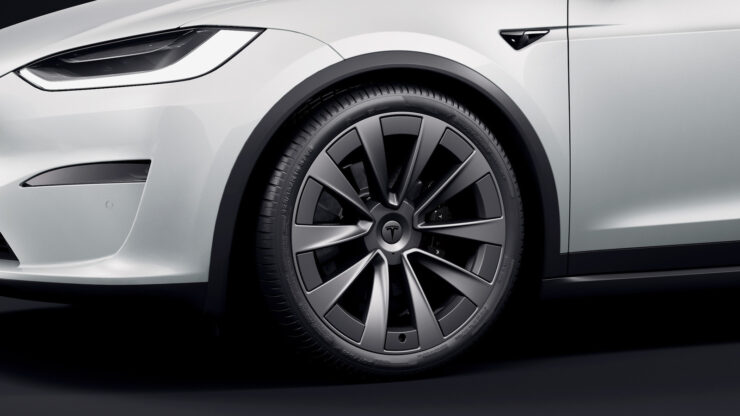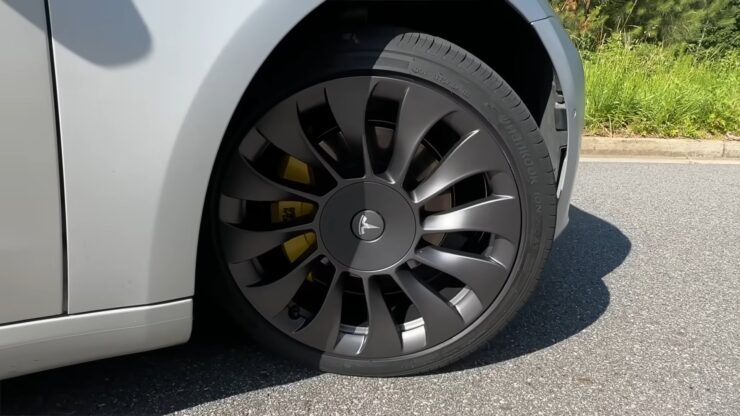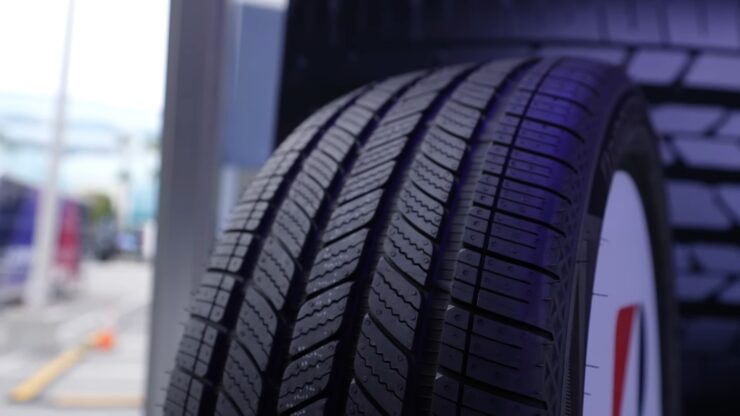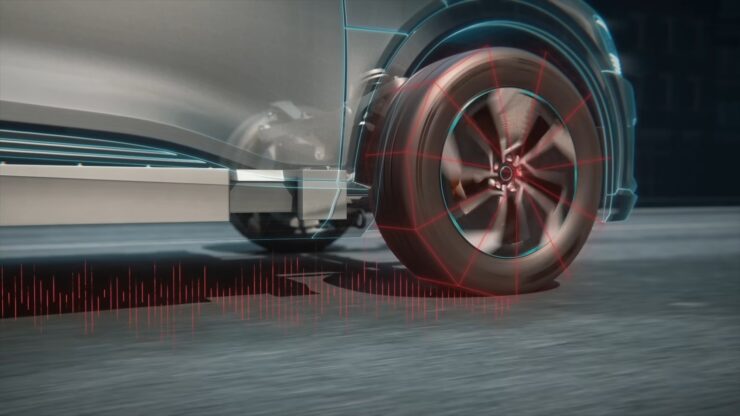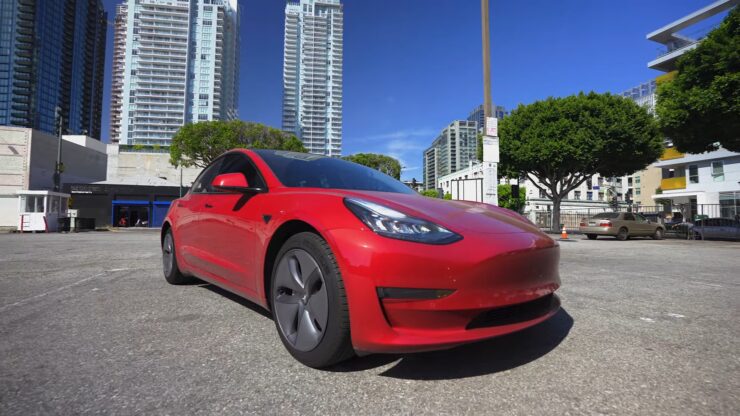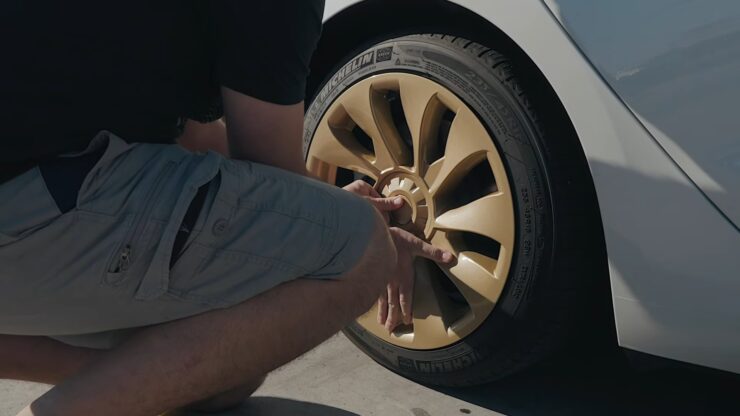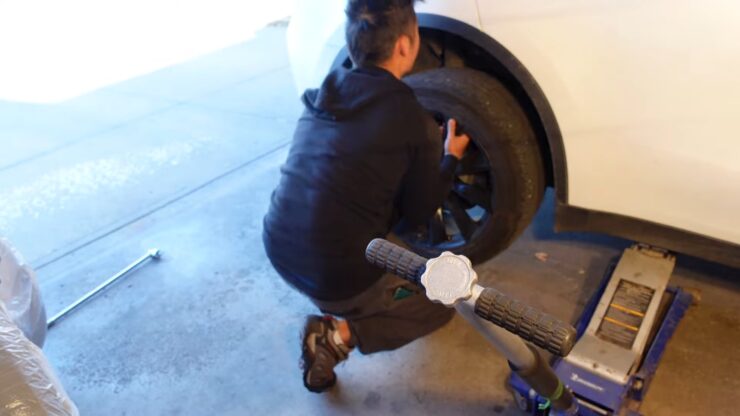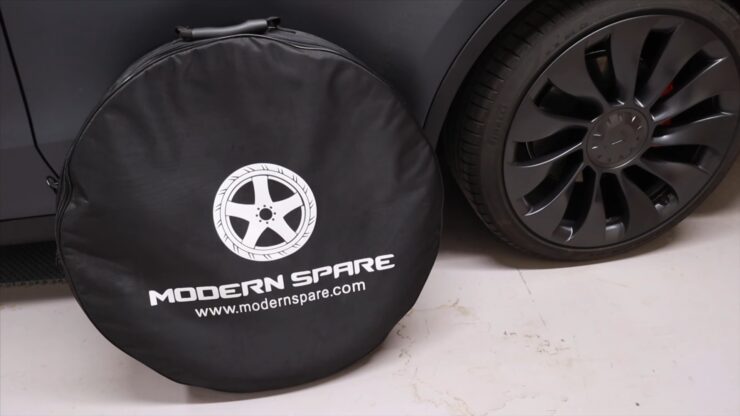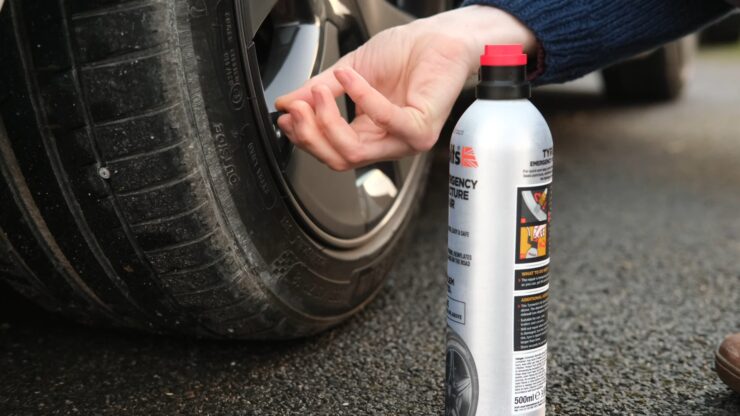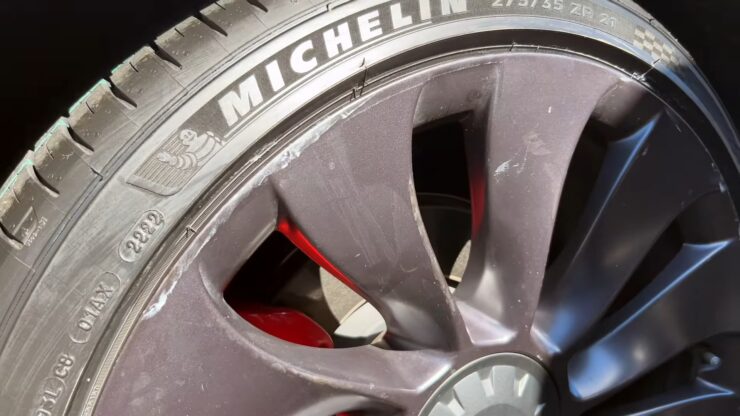Tesla’s innovative approach to electric vehicle production has led to groundbreaking advancements in various aspects of car technology.
One such area that often goes unnoticed is the tires. While they might not be the first thing that comes to mind when thinking about Tesla’s innovations, the tires used by the company are distinct from conventional ones in several ways. Let’s delve into the nine key differences that set Tesla tires apart from the rest.
Personal Insight
Over the decades, I’ve had the privilege of getting my hands greasy with a myriad of vehicles, spanning from classic muscle cars of the ’60s to the modern sedans of the 2000s.
I’ve seen firsthand the evolution of the automobile industry, and I’ve always prided myself on understanding the intricate dance between man and machine. Each car I’ve tested and tinkered with has its own story, its own heartbeat.
But I must say, the shift towards electric vehicles, led predominantly by Tesla, has genuinely piqued my curiosity.
The first time I took a Tesla out for a spin, it felt like I was diving into a new chapter of automotive history. The silence of the engine, the instant torque – it’s a different beast altogether.
And while I’m a sucker for the roar of a classic V8, there’s no denying that the innovative strides Tesla has taken, even down to the tires, are nothing short of groundbreaking.
I’ve always believed that the soul of a car lies in its details, and after understanding the depth of thought Tesla puts into something as fundamental as tires, it’s clear they share that sentiment.
It’s a thrilling time to be a car lover, and I’m just grateful to witness and experience this revolutionary shift in the world of wheels.
9 Distinctions From Other Cars
1. Exceptional Quietness
Electric vehicles (EVs) are inherently quieter than their internal combustion counterparts. However, Tesla has taken noise reduction a step further with their tire design.
Tesla vehicles lack the traditional roar of a gas-powered car, primarily due to the absence of an internal combustion engine. But the company didn’t stop there. To further reduce noise, Tesla incorporated a layer of sound-absorbing polyurethane foam within the tire.
While tire noise contributes significantly to traffic loudness, especially at cruising speeds, Tesla’s foam-lined tires ensure a quieter ride for passengers and reduced noise pollution in pedestrian areas. This dual benefit enhances the driving experience and contributes to quieter urban environments.
2. Enhanced Durability
The unique demands of EVs, especially the instantaneous torque, necessitate tires that can withstand increased wear and tear.
Electric vehicles, particularly Teslas, present challenges that standard cars don’t. For instance, EV motors provide almost 100% of the vehicle’s torque instantly, leading to rapid acceleration. This can cause significant wear on the tires, especially during acceleration and deceleration.
To combat this, Tesla tires are crafted with a special blend of rubber and synthetics, coupled with thicker sidewalls. These materials play a crucial role in the tire’s interaction with the road, influencing:
- Grip
- Stopping power
- Pressure retention
Outsourcing is common for some Tesla parts, including tires. However, the company ensures that the chosen tires meet their stringent requirements.
3. EV-Specific Tread Patterns and Compounds
The tread of a tire plays a pivotal role in its performance. Tesla, understanding the unique requirements of EVs, has incorporated specific tread patterns and compounds to enhance efficiency and safety.
Tesla tires boast an exceptional tread depth, ensuring improved grip on various terrains. Moreover, the compounds used in these tires offer lower rolling resistance, making it easier for the tire to move.
This design efficiency means that Tesla vehicles expend less energy moving their tires, leading to a notable increase in the vehicle’s range compared to standard tires.
4. Increased Load-Bearing Capacity
The weight of a vehicle plays a significant role in determining the kind of tires it needs. Given that Tesla’s battery packs add considerable weight, the company had to rethink its tire design.
Tesla’s electric vehicles, due to their battery packs, often weigh more than conventional cars with similar power outputs. This added weight poses a challenge for the tires, which need to bear the brunt of this increased load.
To address this, Tesla tires are often larger than standard ones. This not only enhances their weight-bearing capacity but also provides a larger surface area for road grip, ensuring safety and stability even with the added weight of the battery packs.
5. Aerodynamic Excellence
Efficiency is at the heart of every Tesla design decision. When it comes to tires and wheels, aerodynamics plays a crucial role in enhancing a vehicle’s range.
Every bit of efficiency counts when a vehicle runs on battery power. Tesla, in its quest for maximum range, has paid meticulous attention to the aerodynamics of its tires and wheels.
The company’s aero wheel covers, though seemingly insignificant, have been shown to boost the vehicle’s range by approximately 10 miles compared to runs without these covers.
These wheel covers, lighter than typical ones, are designed to reduce wind resistance and turbulence.
For those looking to maximize the aerodynamic benefits, Tesla also offers Aero wheels, further testament to the company’s unwavering focus on detail.
6. Repair and Replacement Challenges
While Tesla tires offer numerous advantages, they also come with their own set of challenges, especially when it comes to repairs and replacements.
Some Tesla owners have found that repairing a punctured tire can be more labor-intensive and costly than fixing a standard tire.
As electric vehicles gain popularity and Tesla’s sales surge, more mechanics are becoming acquainted with the intricacies of Tesla tires, making repairs more commonplace.
However, the premium nature of these tires also means a heftier price tag. Typically ranging from $150 to $250 per tire, they can be three to four times pricier than standard tires.
Despite the higher initial cost, their performance benefits often justify the investment.
7. Absence of a Spare
The traditional spare tire, a staple in most vehicles, is conspicuously absent in Tesla models. Let’s explore the rationale behind this decision.
Tesla has chosen to forgo the classic spare tire feature that’s commonplace in most cars. In fact, the trend isn’t exclusive to Tesla; many electric vehicles are now manufactured without spare tires.
This decision stems from multiple reasons. Firstly, Tesla prioritizes weight reduction and maximizing cargo space. The Model 3, for instance, is renowned for its efficient storage capacity.
Additionally, industry trends show that nearly a third of cars released in 2020 came without a spare tire. Given recent data indicating that spare tires remain unused in up to 85% of vehicles, Tesla’s decision seems in line with evolving automotive practices.
8. Limitations with Punctures
While many modern cars come with tires designed to resist immediate deflation upon puncture, Tesla tires have a different story to tell.
Many contemporary vehicles are equipped with run-flat tires, designed to be driven for short distances even after being punctured.
These tires resist immediate deflation, allowing drivers to reach their destination before changing the tire.
However, the specific demands on Tesla’s tires mean that using run-flat designs would compromise performance more than the brand is willing to accept.
But there’s no cause for alarm. In the event of a tire mishap, Tesla offers complimentary roadside assistance, renowned for its prompt and professional service.
9. Extended Longevity
Despite some of the challenges associated with Tesla tires, they come with a silver lining — an impressive lifespan that often surpasses standard tires.
One of the standout features of Tesla tires is their longevity. The rigorous standards set by Tesla’s electric vehicle mechanics mean that these tires often outlast those on conventional cars. Their superior construction ensures they are more resistant to punctures and reduces the tread’s wear over time.
On average, Tesla’s Original Equipment (OE) tires can last between 30,000 and 40,000 miles. In contrast, standard tires, when fitted on a Tesla, tend to wear out 3,000 to 10,000 miles sooner.
This extended lifespan not only offers cost savings in the long run but also underscores the quality and durability of Tesla’s tire choices.
What Are Tesla Tires (T0, T1, T2)?
Most car manufacturers have their own tire markings for OE-approved tires, and Tesla is no exception. Tesla uses the labels T0, T1, and T2 for their tires, but the specific differences between these labels have not been officially disclosed by Tesla. Some sources suggest that T0 is used for smaller models like the Model 3 and Model Y, T1 for the Model S and Model X, and T2 exclusively for the Model S Plaid.
Others speculate that these numbers represent different tire generations, with T0 being the oldest and T2 the latest. However, Tesla has not confirmed these assumptions.
To determine which tires are suitable for your Tesla, consult your owner’s manual or contact your nearest Tesla service center. Here are some examples of OE-approved Tesla tires:
- Pirelli SCORPION™ ZERO™ ASIMMETRICO (Urban) (Summer)
- Pirelli SCORPION™ ZERO ALL-SEASON (Noise Cancelling) (All-Season)
- Michelin Latitude Sport 3 Acoustic
- Michelin Pilot Sport 4S Acoustic
- Michelin Pilot Sport 3 T0
- Michelin Pilot Sport 4S T0
- Pirelli PZero XL (PZ4)
- Conti SportContact 5p
- Hankook Ventus S1 EVO2
- Continental PROCONTACT RX
- Primacy mxm4
Fixing Tesla Tires
There is some confusion surrounding the repair of Tesla tires after a puncture. While it’s true that certain puncture repair methods may not be suitable for Tesla tires, they can be repaired if the puncture is not on the sidewall. You can use a tire plug to fix a Tesla tire, similar to how you would repair any other tire.
However, repairing Tesla tires can be somewhat challenging due to the foam lining on the inside. Using tire patches, for instance, requires cutting out a section of the lining, applying the patch, and then re-gluing the lining back over it. Omitting the foam lining might lead to tire imbalance and increased noise while driving.
It’s important to note that Tesla vehicles do not come with a spare tire or a tire inflator kit to save weight and cargo space. Instead, Tesla offers 24-hour roadside assistance, which is free during the vehicle’s warranty period. Alternatively, Tesla provides an emergency tire repair kit for $70.
However, you can also opt for aftermarket repair kits, which work equally well. Another option is purchasing a complete aftermarket spare tire kit designed specifically for Tesla vehicles. These kits include a car jack, a space-saving spare wheel, and all the necessary tools. While these kits are more expensive than repair kits, they provide a more comprehensive solution for tire-related emergencies.
FAQ
1. Are Tesla tires more expensive to replace than regular tires?
Yes, Tesla tires tend to be more expensive than standard tires. They can cost anywhere from $150 to $250 per tire, which is typically three to four times the cost of regular tires. However, the increased performance and longevity of Tesla tires often justify the investment.
2. Can I use regular tires on a Tesla?
While it’s possible to use regular tires on a Tesla, it’s not recommended. Tesla’s unique tire specifications are designed to optimize performance, efficiency, and safety for electric vehicles. Using regular tires may compromise these factors.
3. Do Tesla tires come with a warranty?
Yes, Tesla tires typically come with a limited warranty that covers manufacturing defects. The specifics of the warranty may vary depending on the tire model and supplier, so it’s advisable to check with Tesla or the tire manufacturer for details.
4. How often should I rotate and balance Tesla tires?
Rotating and balancing Tesla tires is essential to ensure even wear and maximize their lifespan. It’s generally recommended to rotate and balance the tires every 10,000 to 12,000 miles or as specified in the vehicle’s owner’s manual.
5. Can I use Tesla tires in extreme weather conditions?
While Tesla tires are designed for a variety of conditions, including wet and dry roads, it’s essential to consider your local climate. If you frequently encounter extreme weather conditions like heavy snow or ice, you may want to consider specialized winter tires for added safety.
6. Are there aftermarket tires available for Tesla vehicles?
Yes, there are aftermarket tires available for Tesla vehicles. However, when choosing aftermarket tires, it’s crucial to ensure that they meet Tesla’s specifications for load capacity, size, and performance to maintain the safety and performance of your vehicle.
Final Thoughts
Tesla’s commitment to innovation extends to every aspect of their electric vehicles, including specialized tires. These tires, with their unique features like reduced noise, increased durability, and improved efficiency, contribute to a superior driving experience.
As the electric vehicle industry continues to evolve, Tesla’s approach to tires sets the standard for performance, sustainability, and safety.
Whether you’re a Tesla owner or simply interested in the future of automotive technology, understanding the importance of specialized tires is key to appreciating the broader impact of electric vehicles on our roads.

